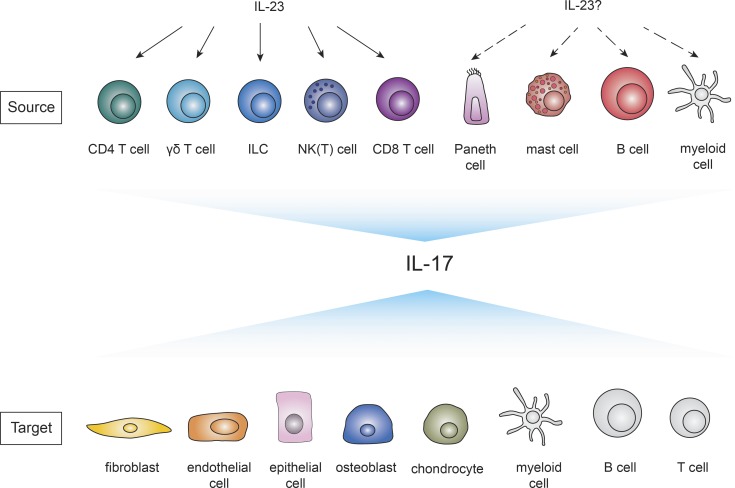Figure 2.
Cellular sources and targets of IL-17A/F. Overview of described cellular sources (top row) and targets (bottom row) of IL-17A/F. IL-23 induces IL-17 production in CD4 T cells (Aggarwal et al., 2003), γδ T cells (Sutton et al., 2009), NK(T) cells (Michel et al., 2007; Passos et al., 2010), ILCs (Buonocore et al., 2010), and CD8 T cells (Happel et al., 2003). The dependence of IL-23 on other IL-17–producing cells as Paneth cells (Takahashi et al., 2008), mast cells (Lin et al., 2011; Mashiko et al., 2015), and B cells (Schlegel et al., 2013) has to be determined. Whether myeloid cells (depicted in gray) produce IL-17 is still controversially discussed (Ferretti et al., 2003; Song et al., 2008; Li et al., 2010; Tamassia et al., 2018). IL-17RA is ubiquitously expressed, but the main targets of IL-17 include endothelial cells, epithelial cells, fibroblasts (Fossiez et al., 1996), osteoblasts (Kotake et al., 1999), and chondrocytes (Shalom-Barak et al., 1998). Less-studied potential cellular targets of IL-17 (depicted in gray) are myeloid cells and B and T cells.

